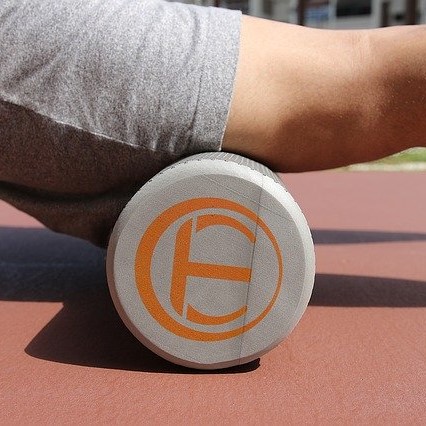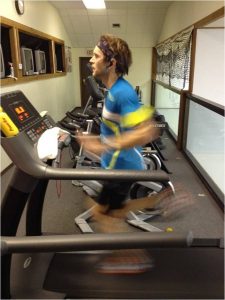Warming Up- often forgotten and rushed but essential

Warming Up- often forgotten and rushed but essential
 Warming up, the oft-forgotten and rushed part of our workouts, they don’t offer the instant satisfaction that lifting huge weights or getting a bicep pump do, but warmups are an integral part of the training process intended to prime the nervous system for performance, improve blood flow, raise body temperature, improve range of motion, and reduces risk of injury (Lum 2019, 459-465)(Cunniffe 2017, 95-105).
Warming up, the oft-forgotten and rushed part of our workouts, they don’t offer the instant satisfaction that lifting huge weights or getting a bicep pump do, but warmups are an integral part of the training process intended to prime the nervous system for performance, improve blood flow, raise body temperature, improve range of motion, and reduces risk of injury (Lum 2019, 459-465)(Cunniffe 2017, 95-105).
But what makes a good warm-up? A light jog, stretching, foam rolling? It depends!
But what makes a good warm-up? A light jog, stretching, foam rolling? It depends! Today, we’re going to discuss the science behind different warm-up strategies and how to implement a warm-up specific to your goals and needs.
First, let’s cover some definitions and clarify the science behind the most common techniques and tools that are used during a warm-up:
Cardio
Cardio can be used to raise body temperature for more optimal energy systems utilization during the workout and to prepare tissues for the demands of training.
-
- Example: biking, jogging, brisk walking
- Research says that, when training for strength, raising body temperature slightly before training improves performance, this can be achieved by doing low-intensity cardio for about 15 minutes prior to training. However, doing too much time or at too high an intensity can risk inducing excessive fatigue or elevating body temperature too much which could limit strength performance during training (Barosso et al. 2013, 1009-13).
Static Stretching
Static stretching is an activity dome before or after exercise intended to lengthen the muscle and/or connective tissue in an area to increase range of motion or reduce the risk of injury ( Siebert et al. 2020).
- Example: sit and reach stretch
- The current literature on stretching often fails to find consensus on the definitions of “intensity” and “pain threshold” as they relate to static stretching, the ways in which muscle stiffness and passive torque are measured vary, and the level of training, age, and gender for test subjects varies widely making blanket recommendations on stretching difficult to determine (Kataura et al. 2017, 3403-10). However, research from Matsuo et al. shows that both short and long duration static stretching reduced isometric muscle strength significantly after stretching (2013, 3367-76). Another study shows that static stretching prior to training reduces power output and muscle activation (Marek et al. 2005, 94-103). Because static stretching reduces strength and power when done prior to exercise, we may want to save our static stretching for the end of the workout or have a window of rest after we stretch before we are expected to produce large amounts of force to prevent stretching from interfering with muscular performance.
Foam Rolling
Often described as self-myofascial release (SMR), foam rolling is a means of applying pressure to a soft tissue intended to improve range of motion, relieve pain, or improve recovery.
- Example: Upper back and Quad Roll
- Current research shows that foam rolling acts transversely (perpendicular to the fibers) on muscle tissues as opposed to longitudinally (in line with the fibers end to end) like dynamic and static stretching do this alone may be a valuable addition to a warm-up routine as it provides a distinctly different stimulus from other warm-up techniques. Foam rolling, as a type of SMR, has been shown to improve range of motion acutely without decrements to muscle strength or performance (MacDonald et al. 2013, 812-21). Furthermore, research on traditional massage shows that massage techniques have beneficial “biomechanical, neurological, physiological, and psychological” effects (Weerapong and Kolt 2005, 235-56). It has been asserted that SMR may act similarly to traditional massage in terms of these effects (Richman et al. 2019, 1795-1803). In fact, one study by Lastova et al. shows that foam rolling reduces sympathetic nervous system tone (the fight or flight mode), and that through this mechanism it can potentially lower blood pressure and heart rate (2018, 2825-2830). Foam rolling also improves arterial blood delivery to tissues after they have been rolled which is valuable before and after a workout (Hotfiel et al 2017, 893-900). Lastly, one effect of exercise training is post exercise-induced muscle damage, while some muscle damage may improve adaptations to exercise, too much can impair performance. Fortunately, foam rolling seems to attenuate the performance impairing effects of muscle damage making it a useful tool for muscle recovery after training too (D’Amico and Gillis 2019, 2443-2452).
Dynamic Stretching
Repetitive and rhythmic ballistic movements that involve the rapid stretching of a muscle during movement intended to increase muscle and connective tissue length as well as improve range of motion or reduce injury risk (Siebert et al. 2020).
- For example the toy soldier straight leg kick
- Current research suggests that dynamic stretching improves range of motion similar to static stretching (Siebert et al. 2020). Dynamic stretching appears to improve range of motion without the negative effects of reduced strength and power that are present when static stretching (Sekir et al, 2010). When it is designed to simulate sporting movement patterns it has the potential to significantly increase power output (Yamaguchi et al. 2007, 1238-44). Lastly, dynamic stretching warm-up routines may serve a restorative and protective function by helping to reduce muscle damage from sprint activity completed after dynamic stretching (Chen et al. 2018, 3276-84). Athletes who compete often or back to back as well as folks who engage in sports requiring sprint activity or similar ballistic movements should consider adding dynamic stretching into their warm-up routines in order to improve performance.
Explosive / Plyometric movements
Typically done with the goal of achieving neurological recruitment for the workout and to teach the body to be fast and explosive before fatigue sets in from the rest of the training session
- Example: hops, jumps, bounds, explosive medicine ball throws, Olympic lift variations with KB or Barbell
- Research completed in 2019 by Johnson et al. shows that plyometric training can induce something called post-activation potentiation (PAP). This is a fancy way to say that after doing plyometric movements the muscle is able to produce more force in the same or less time than it was before doing the plyometric movements. PAP happens when a compound called myosin is phosphorylated, making it more sensitive to calcium (a critical component of muscle contraction) this makes muscles produce more force during contraction and increases their rate of force development (RFD) i.e. the muscle produces more force in the same time or the same force in less time. Who doesn’t want to be stronger AND faster? Unfortunately, this PAP only lasts roughly 6 minutes, so doing these movements at the end of a warmup shortly before intending to lift or enter the field of play is the way to get the most out of plyometric warm-ups and the PAP that follows (Johnson et al 2019).
Warm-Up Sequencing
Typically, warm-ups should be designed to prioritize movements that mimic what is being done during the workout or sport. They should prepare the whole system and specific tissues to handle the tasks ahead. In order to take advantage of the benefits and minimize any negative effects of the protocols above, I sequence warmups as follows
- Light cardio of choice for 10-15 minutes
- Whole-body foam roll with an emphasis on primary regions to be trained
- Movement series of dynamic stretches that mimic sport or training movement
- Sport and training plyometric/explosive exercises done just prior to primary movement
- Static Stretching is typically done during the cool down only. I suggest only doing static stretches post-training, or for very specific highly inflexible areas just after light cardio and before foam rolling. Be cautious, creating too much flexibility in a joint that isn’t strong enough to control the increased range of motion during loaded training can pose an injury risk.
Now that we more fully understand the elements of warming up, how they work, and how they’re used. Let’s put them into practice! Below are 2 warm-up protocols that are goal specific. Try them out and see how they work for you
Lower Body Warm Up
Bike at an easy pace 10-15 minutes
Foam roll Quads, Glutes, Hamstrings, and Calves
Dynamic Series
A1: Toy Soldier 20 yds
A2: Inch Worm 20 yds
A3: Knee Hug 20 yds
Power Series
Box Jump 3 sets of 3 reps with 1 min rest between
Upper Body Power Warm Up
Row or walk at an easy pace for 10-15 minutes
Foam Roll Tspine, Lats, and Pecs
Dynamic Series
A1: Snatch Grip PVC Overhead Stretch
A2: Wall Slides
Power Series
Med Ball chest pass 3 x 3 explosive reps
Explosive TRX row 3 x 3 explosive reps


Leave a Reply
You must be logged in to post a comment.